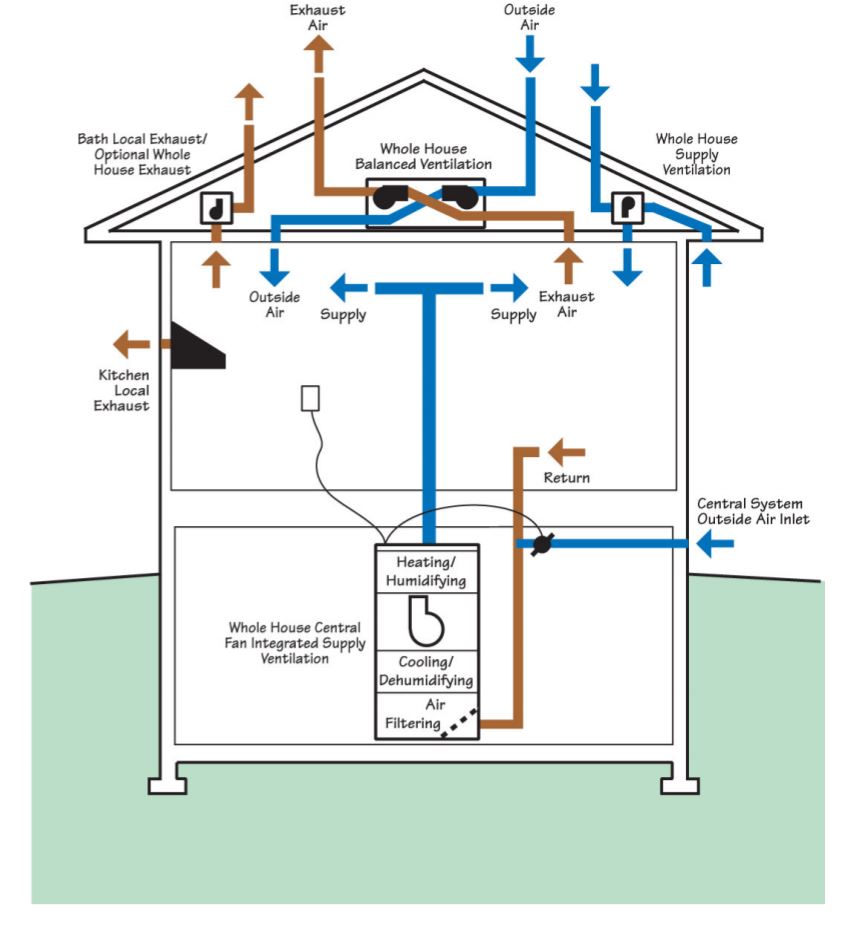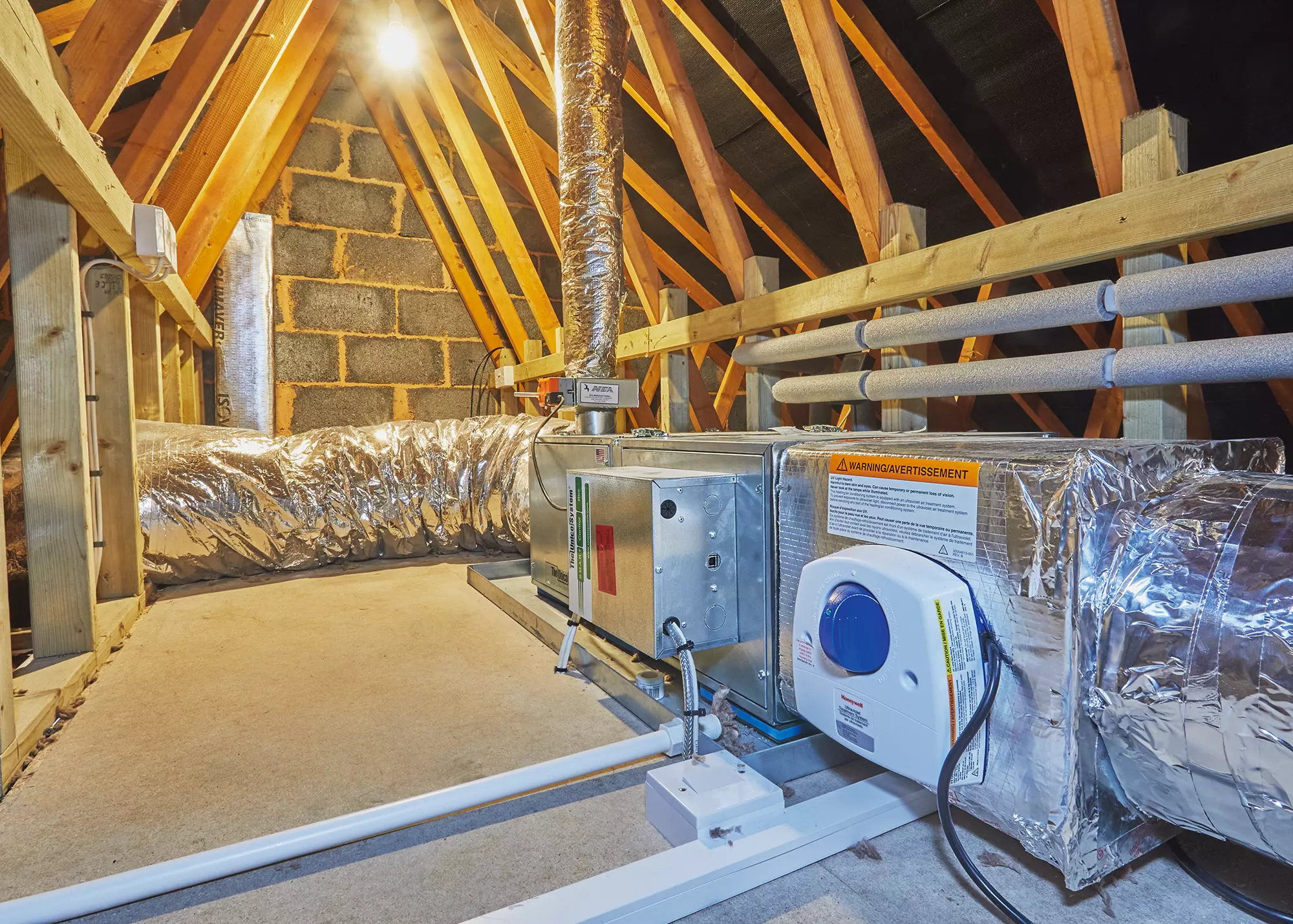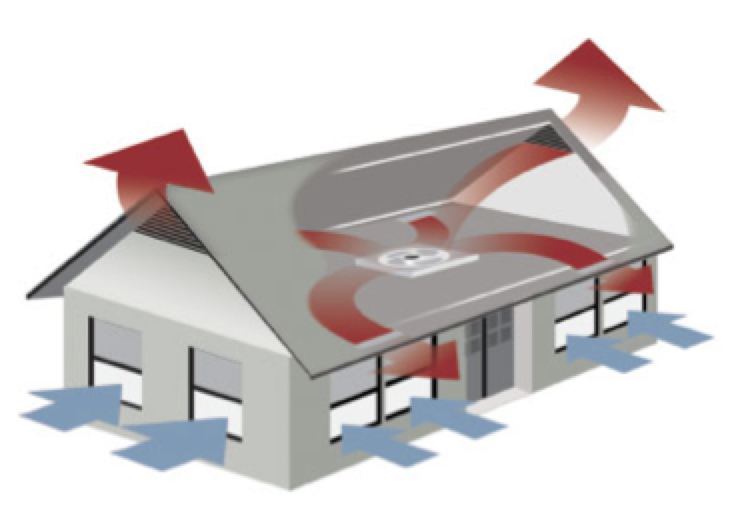Home Ventilation Melbourne: Best Practices for Year-Round Air Quality
Wiki Article
Comprehending the Importance of Home Ventilation for a Healthier Living Atmosphere
Home ventilation plays a necessary role in keeping a healthy living atmosphere. It facilitates the exchange of exterior and indoor air, which is essential for enhancing air high quality. Without appropriate air flow, homes can become breeding premises for contaminants and allergens. The repercussions of poor air blood circulation can be significant. This raises the query of how house owners can successfully execute ventilation strategies to protect their health and wellness. Understanding these techniques is crucial.
The Basics of Home Air Flow
Home air flow functions as an important part of interior air quality and convenience. It includes the procedure of exchanging stale interior air with fresh outdoor air, therefore decreasing humidity and managing temperature. Appropriate ventilation systems can include all-natural methods, such as open home windows and vents, in addition to mechanical systems, such as exhaust fans and air exchangers. Reliable home ventilation assists prevent issues like indoor mold and mildew growth and the accumulation of damaging fragments. It also enhances overall energy efficiency, as well-ventilated spaces can maintain comfy temperature levels with less reliance on heating and cooling down systems. Recognizing the essentials of home ventilation is vital for home owners looking for to create a much healthier living atmosphere on their own and their families.
Typical Resources of Indoor Air Air Pollution

Although many may not understand it, indoor air pollution can stem from various sources within a family. Common factors include volatile natural substances (VOCs) given off from paints, solvents, and cleaning products. Household home appliances, such as gas cooktops and fire places, can release dangerous gases like carbon monoxide and nitrogen dioxide. Furthermore, mold and mildew and mildew thrive in wet locations, releasing spores that affect air quality. Animal dander, dirt termites, and pollen can gather inside, further exacerbating pollution levels. Smoking inside your home generates harmful chemicals that remain in the air. Finally, constructing products, including asbestos and formaldehyde, can off-gas damaging compounds. Identifying these sources is vital for maintaining a healthier indoor setting and advertising effective air flow approaches.
Wellness Effects of Poor Air Flow
Indoor air pollution can have considerable health implications, specifically when ventilation is poor. Poor air flow can lead to the buildup of unsafe pollutants, such as unpredictable organic compounds, mold and mildew, and particle matter. This accumulation may lead to breathing issues, including bronchial asthma, allergic reactions, and chronic obstructive pulmonary disease. Individuals might experience signs and symptoms like migraines, fatigue, and irritability of the eyes, nose, and throat. Susceptible populaces, such as kids and the elderly, are at greater danger for extreme health and wellness effects. Long-term exposure to improperly ventilated settings can also contribute to extra severe problems, including cardio diseases. As a result, making certain proper ventilation is crucial for keeping a healthy and balanced living environment and decreasing the risk of wellness difficulties connected with indoor air pollution.Efficient Air Flow Approaches for Your Home
Correct air flow is crucial for keeping a healthy interior environment, and carrying out effective strategies can significantly boost air top quality. Property owners can start by making sure that exhaust fans are installed in bathroom and kitchens to remove excess wetness and odors. Opening home windows regularly permits fresh air to circulate, particularly throughout mild weather condition. Furthermore, making use of air cleansers with HEPA filters can assist catch air-borne toxins. For homes with home heating and cooling down systems, maintaining cooling and heating systems and transforming filters regularly is crucial for peak efficiency. Integrating all-natural air flow techniques, such as cross-ventilation, can likewise improve air movement. Lastly, securing any leakages in home windows and doors avoids unwanted drafts, which can disrupt controlled airflow, inevitably resulting in enhanced interior air top quality and comfort.Preserving Ideal Air Top Quality Year-Round
To preserve perfect air top quality year-round, home owners need to adopt a positive approach to managing their interior atmosphere. Frequently keeping track of indoor air top quality is critical; this consists of monitoring for toxins such as dirt, mold, and unstable natural substances (VOCs) Implementing efficient ventilation systems, such as exhaust followers and air cleansers, can greatly decrease airborne impurities. In addition, regular upkeep of cooling and heating systems guarantees peak performance and air flow. Property owners should also take into consideration moisture degrees, as excessive wetness can cause mold growth. Seasonal changes may necessitate modifications in ventilation methods to Home Ventilation Melbourne accommodate differing outside air high quality. By focusing on these methods, house owners can produce a healthier living space, advertising general well-being for all residents throughout the year.Often Asked Concerns
Exactly How Can I Tell if My Home Requirements Much Better Air Flow?
To establish if a home calls for far better air flow, one should observe indications such as persistent moisture, mold and mildew growth, moldy odors, condensation on windows, or enhanced allergic reaction signs, showing insufficient airflow and potentially poor interior air top quality.What Are the Signs of Poor Indoor Air Top Quality?

Can Houseplants Improve Indoor Air High Quality Effectively?
The efficiency of houseplants in boosting indoor air top quality is questioned. While some studies recommend they can absorb toxic substances and generate oxygen, their general impact might be marginal contrasted to proper ventilation and air filtration systems.Exactly how Commonly Should I Modification My Air Filters?
The frequency of air filter changes normally depends on usage and filter kind. Normally, it is suggested to replace filters every 3 months, though families with allergies or pet dogs might require more frequent modifications for optimal performance.Are There Any Type Of Certain Air Flow Solutions for Allergic Reaction Sufferers?
Lots of ventilation systems, such as HEPA-filtered systems, effectively decrease irritants airborne. Home Ventilation Melbourne. These systems catch animal, pollen, and dirt dander, giving allergic reaction patients with a cleaner, healthier indoor setting while handling air top quality effectively
It helps with the exchange of indoor and outdoor air, which is essential for boosting air high quality. Home air flow offers as a vital component of interior air high quality and convenience. It includes the procedure of trading stale interior air with fresh outside air, thereby minimizing moisture and managing temperature level. Interior air pollution can have substantial health effects, specifically when ventilation is inadequate. Appropriate air flow is crucial for preserving a healthy interior atmosphere, and applying effective approaches can significantly improve air quality.
Report this wiki page